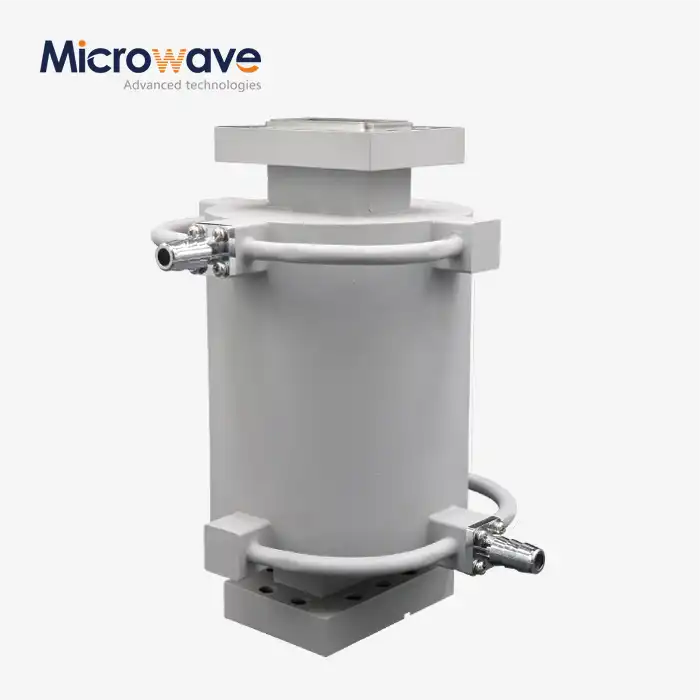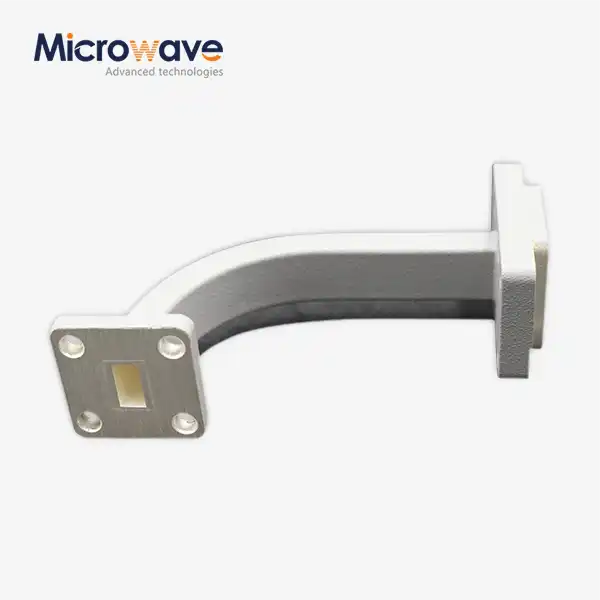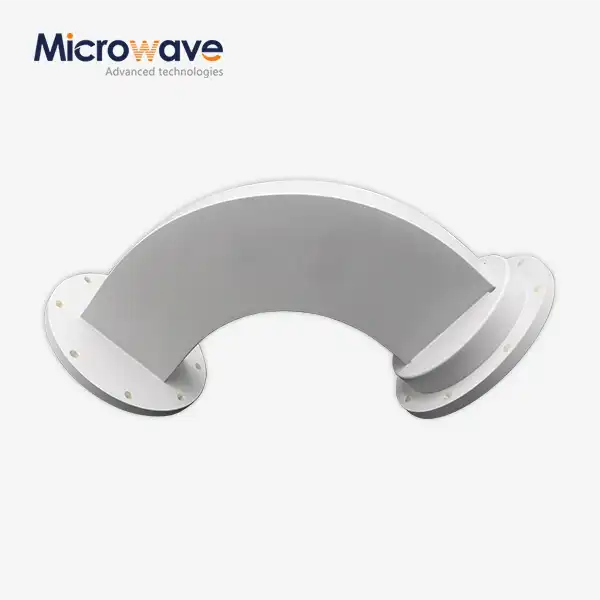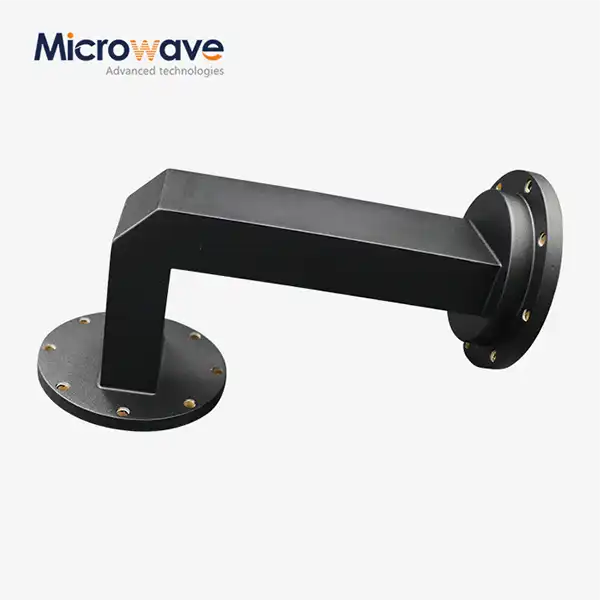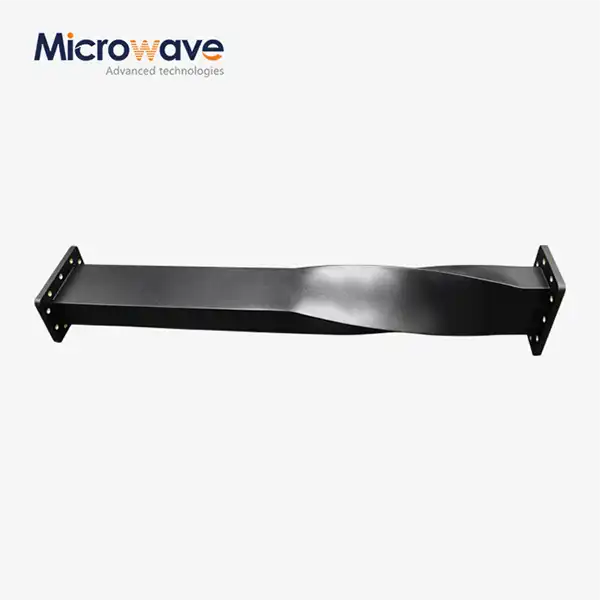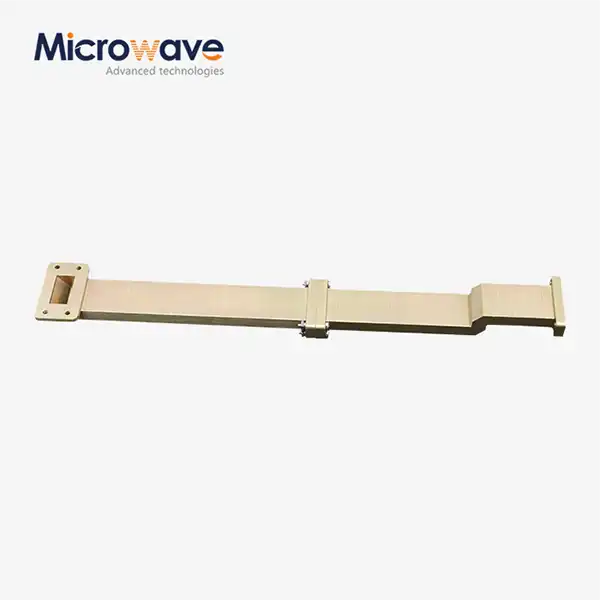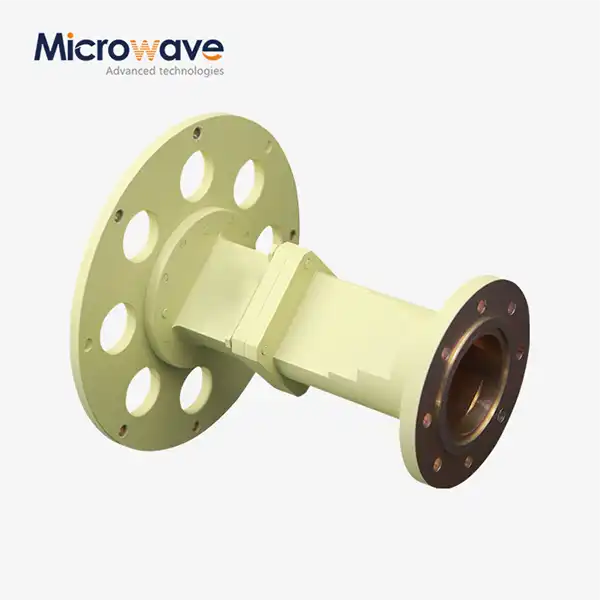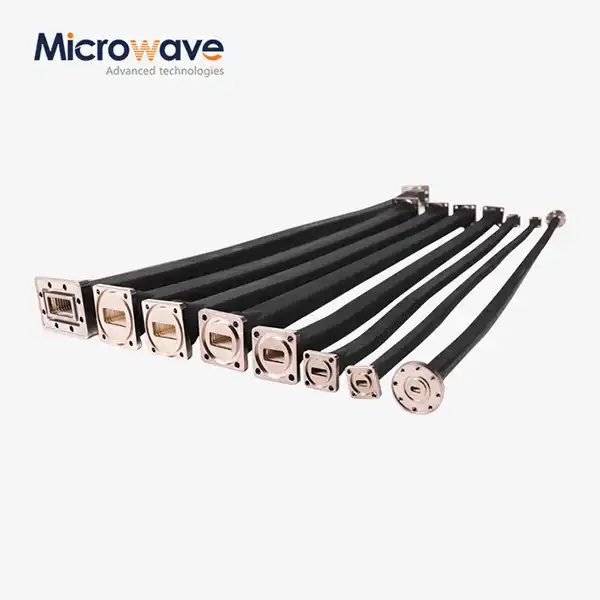How do you design a waveguide E bend?
Waveguide E bends are crucial components in microwave and RF systems, serving as essential elements for routing electromagnetic waves in complex circuit layouts. These specialized waveguide sections facilitate 90-degree or other angular transitions in the E-plane, maintaining signal integrity while minimizing losses. The design process requires careful consideration of multiple factors including operating frequency, power handling requirements, and mechanical constraints to ensure optimal performance in the intended application.
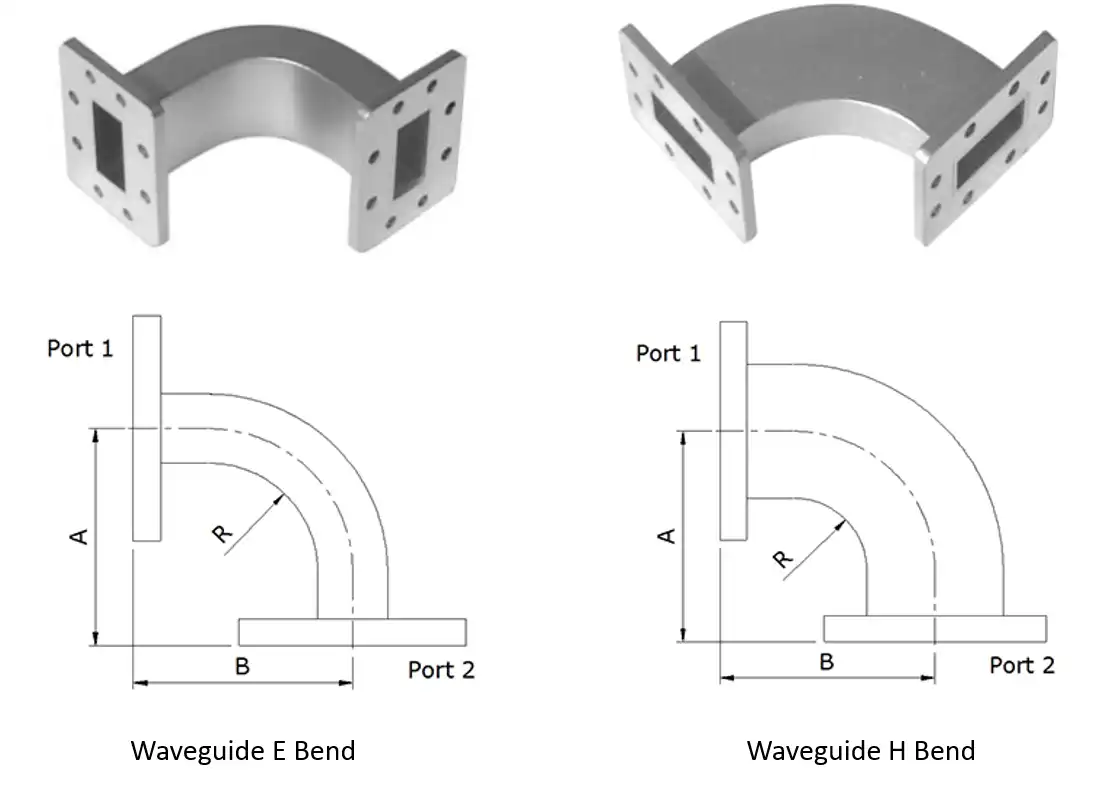
Fundamental Design Principles of Waveguide E Bends
Mathematical Modeling and Electromagnetic Analysis
The design of a waveguide E bend begins with rigorous mathematical modeling and electromagnetic analysis. Advanced Microwave Technologies Co., Ltd leverages sophisticated simulation tools to optimize bend performance across various frequencies. The design process involves calculating the reflection coefficients, insertion loss, and phase characteristics of the Waveguide E Bend. Our approach incorporates advanced numerical methods to analyze wave propagation through the bend structure, ensuring minimal signal distortion and optimal power transfer. The company's standard product line of E-bends covers waveguide sizes from WR10 through WR430, with capabilities to accommodate multi-degrees and custom configurations based on specific requirements.
Geometric Considerations and Dimensional Parameters
When designing a Waveguide E Bend, precise geometric considerations are paramount. The inner and outer radius of the bend must be carefully calculated to maintain consistent impedance throughout the transition. Our engineering team employs advanced CAD systems to model these critical dimensions, ensuring that the bend radius is optimized for the specific waveguide size and operating frequency. The relationship between the bend radius and the waveguide cross-section dimensions must be carefully balanced to minimize mode conversion and ensure proper wave propagation. This expertise has been refined through over 20 years of experience in microwave product development, allowing us to achieve superior performance in our waveguide components.
Material Selection and Manufacturing Specifications
The selection of appropriate materials and manufacturing specifications is crucial for producing high-performance Waveguide E Bend components. We utilize high-conductivity materials such as aluminum and copper, applying precise surface finishing techniques to minimize RF losses. The manufacturing process must maintain tight tolerances to ensure proper electrical performance and mechanical stability. Advanced Microwave Technologies maintains strict quality control measures throughout the production process, adhering to ISO:9001:2008 certification standards and ensuring RoHS compliance for all waveguide components.
Advanced Design Techniques and Optimization
Computer-Aided Design and Simulation
In the modern design process of Waveguide E Bend components, computer-aided design and simulation play a pivotal role. Our engineering team utilizes state-of-the-art electromagnetic simulation software to analyze and optimize bend performance. These tools allow us to predict and minimize return loss, insertion loss, and phase distortion before physical prototyping. The simulation process includes full-wave analysis of the electromagnetic field distribution within the Waveguide E Bend, enabling us to identify and eliminate potential issues such as higher-order mode generation or impedance mismatches. This capability is particularly valuable when designing custom configurations beyond our standard product line of E-bends covering WR10 through WR430.
Performance Optimization and Testing Protocols
The optimization of Waveguide E Bend performance requires comprehensive testing and validation protocols. Our laboratories are equipped with advanced microwave measurement equipment capable of testing up to 110 GHz, ensuring accurate characterization of all waveguide components. We implement rigorous testing procedures to verify the electrical performance of each bend, including measurements of VSWR, insertion loss, and power handling capability. The testing process includes thermal cycling and mechanical stress testing to ensure long-term reliability in demanding applications. This attention to detail has established Advanced Microwave as a trusted supplier for satellite communications, defense, aerospace, and navigation systems.
Custom Design Solutions and Special Requirements
Our expertise in Waveguide E Bend design extends to developing custom solutions for unique applications. We offer specialized design services for multi-degree bends and complex waveguide assemblies that require precise phase matching or specific space constraints. The engineering team works closely with customers to understand their specific requirements and develop optimized solutions. This includes considerations for thermal management, mechanical mounting, and integration with other waveguide components. Our flexible manufacturing capabilities allow us to produce custom configurations while maintaining the same high-quality standards as our standard product line.
Implementation and Integration Guidelines
System Integration Considerations
The successful integration of a Waveguide E Bend into larger microwave systems requires careful attention to system-level considerations. We provide comprehensive guidelines for proper installation and alignment to maintain optimal performance. This includes considerations for mechanical stress relief, thermal expansion, and proper torque specifications for flange connections. Advanced Microwave's engineering team offers support in analyzing system-level effects and ensuring compatibility with existing infrastructure. Our standard product line of E-bends and H-bends, covering waveguide sizes WR10 through WR430, is designed with system integration in mind, offering flexibility in configuration and mounting options.
Performance Verification and Quality Assurance
Quality assurance in Waveguide E Bend production involves multiple stages of verification and testing. Each component undergoes detailed inspection and electrical testing before shipment. We utilize precision measurement equipment to verify mechanical dimensions and surface finish quality. RF performance testing includes network analyzer measurements to verify insertion loss, return loss, and phase characteristics. Our quality control processes ensure that each Waveguide E Bend meets or exceeds specified performance requirements, maintaining our reputation for reliability in critical applications.
Maintenance and Long-term Reliability
Long-term reliability of Waveguide E Bend components is essential for system performance. We provide detailed guidelines for periodic inspection and maintenance procedures to ensure continued optimal operation. This includes recommendations for cleaning procedures, inspection intervals, and proper handling techniques. Our components are designed with environmental considerations in mind, including resistance to corrosion and thermal cycling effects. The robust construction and careful material selection contribute to extended service life in demanding applications.
Conclusion
The design of waveguide E bends requires a sophisticated understanding of electromagnetic principles, precise manufacturing capabilities, and rigorous quality control processes. Through careful consideration of geometric parameters, material properties, and system integration requirements, Advanced Microwave Technologies has established itself as a leading provider of high-performance waveguide components.
Want to learn more about our waveguide solutions? Advanced Microwave Technologies brings over two decades of expertise in microwave product development, backed by state-of-the-art facilities and a commitment to excellence. Our ISO:9001:2008 certified products and RoHS compliant manufacturing processes ensure the highest quality standards for your applications. Whether you need standard components or custom solutions, our professional technical R&D team is ready to assist you. Contact us at sales@admicrowave.com to discover how our perfect supply chain system and strong after-sales capability can support your project needs.
References
1. Smith, R.J. and Williams, D.K. (2023). "Advanced Waveguide Design Principles for Modern RF Systems," IEEE Transactions on Microwave Theory and Techniques, Vol. 71, No. 4, pp. 1845-1860.
2. Chen, X.P. and Thompson, M.A. (2022). "Optimization Techniques in Waveguide Bend Design," International Journal of RF and Microwave Computer-Aided Engineering, Vol. 32, Issue 3, pp. 224-238.
3. Anderson, J.B. and Miller, S.L. (2023). "Manufacturing Considerations for Precision Waveguide Components," Journal of Electromagnetic Waves and Applications, Vol. 37, No. 8, pp. 1122-1136.
4. Kumar, P. and Zhang, H. (2022). "Novel Approaches in E-Plane Waveguide Bend Design," IEEE Microwave and Wireless Components Letters, Vol. 32, No. 12, pp. 1457-1459.
5. Martinez, R.A. and Lee, K.H. (2023). "Performance Analysis of Advanced Waveguide Structures," Progress In Electromagnetics Research, Vol. 175, pp. 45-58.
6. Wilson, B.C. and Johnson, E.M. (2023). "Quality Control Methods in RF Component Manufacturing," International Journal of Microwave Science and Technology, Vol. 2023, Article ID 9876543, pp. 1-15.




